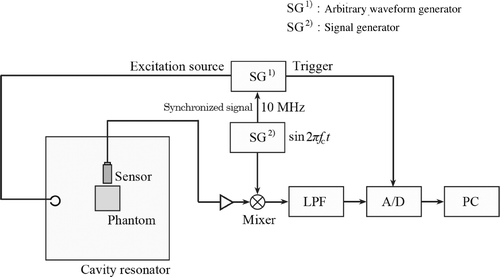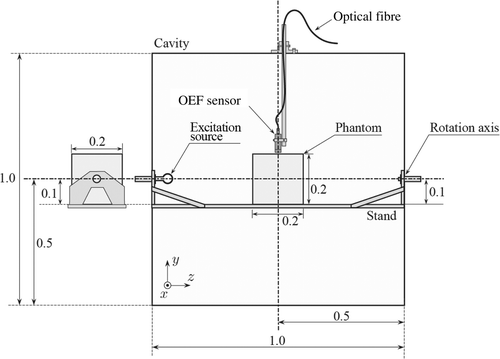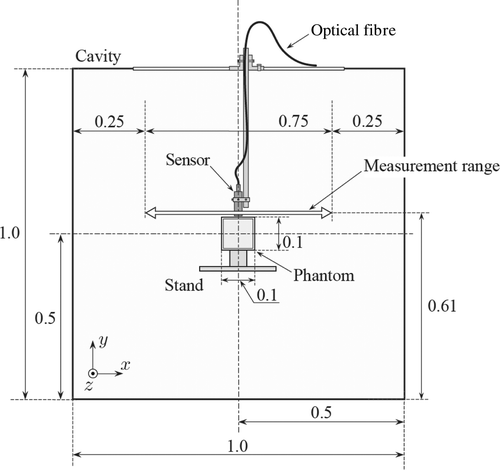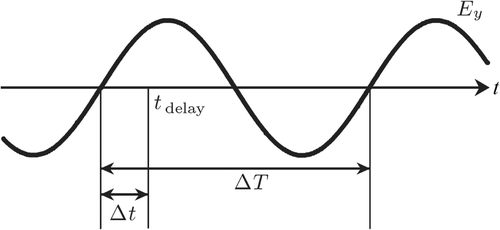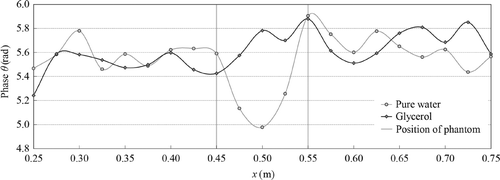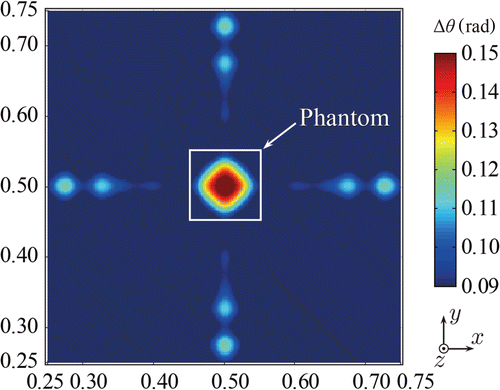Figures & data
Figure 1. Electromagnetic distribution of the lowest (TE101) mode in a rectangular cavity resonator.
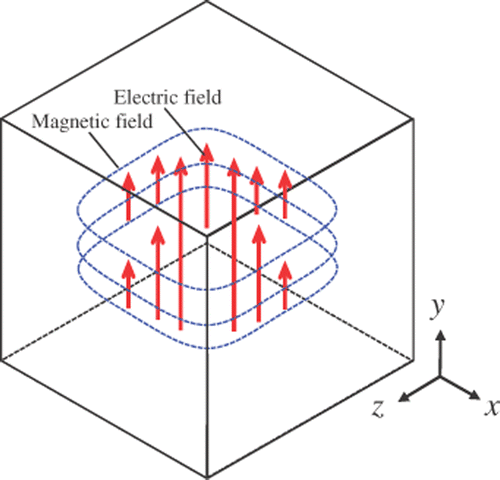
Figure 2. Cross section of applicator and electromagnetic field distribution of the lowest (TM010) mode in a re-entrant cavity resonator.

Figure 3. CT algorithm. Phase change distribution before and after a temperature change in a heating applicator (re-entrant cavity resonator) (A) is acquired as projection data at each rotational angle (B).
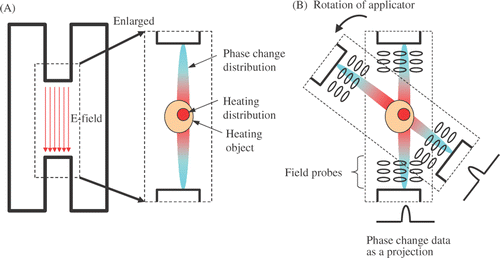
Figure 5. Overview of prototype system. Third angle projection of rectangular cavity resonator (A). External view of entire system (B).
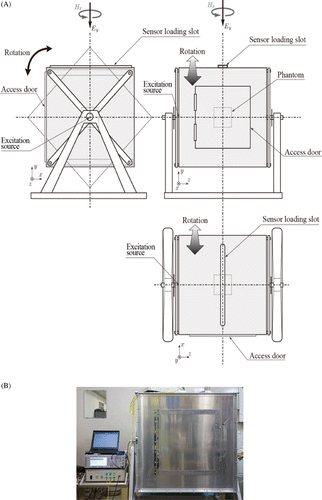
Figure 9. Excitation waveform for cavity resonator. Gaussian waveform modulated by resonant frequency (A). Frequency component of this time waveform (B).

Figure 12. Waveform of electric field measured using optical electric field sensor at each position. The sensor was moved in the x (axial) direction near the centre of the cavity resonator, as shown in (x = 0.25–0.75 m). Time series waveform of y component of electric field for pure water (A). Time series waveform of y component of electric field for glycerine (B).
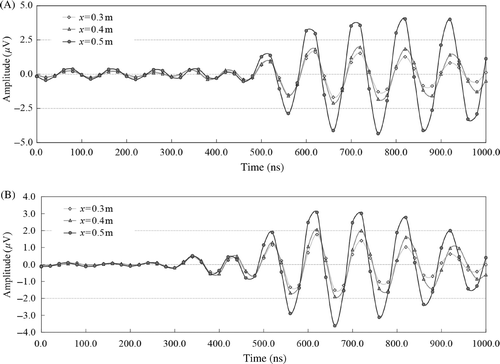
Figure 14. Phase difference with the dielectric constant change, which simulated a temperature change, as projection data.
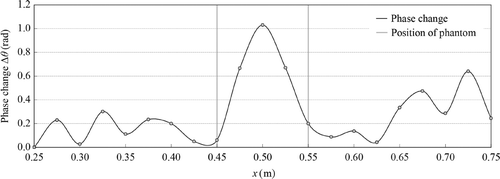
Figure 16. Numerical analysis results Citation[12] showing detection sensitivity of phase changes in a rectangular cavity resonator.
![Figure 16. Numerical analysis results Citation[12] showing detection sensitivity of phase changes in a rectangular cavity resonator.](/cms/asset/e8b6df5b-2906-4bb9-b2c9-638006a1b8b1/ihyt_a_602038_f0016_b.gif)

